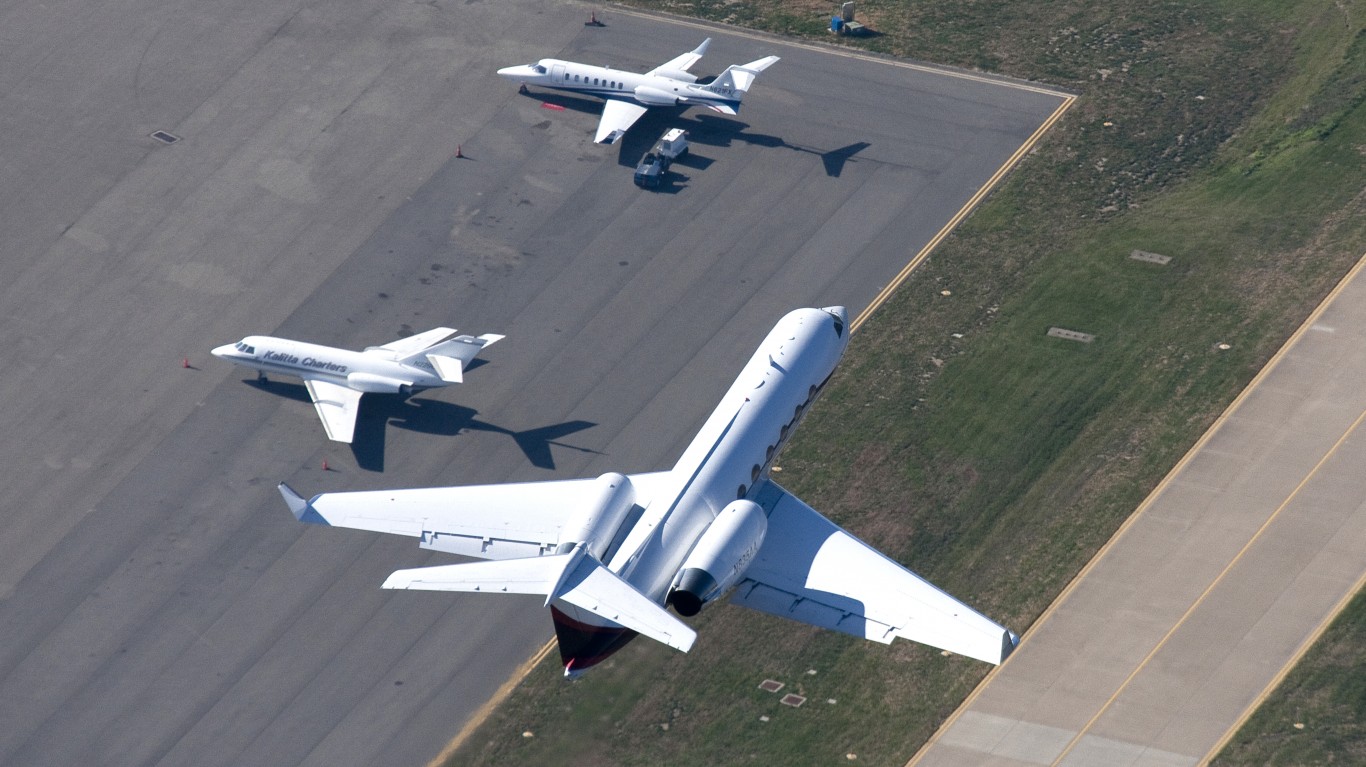Transportation
How Each Airline Is Withstanding the Coronavirus Destroying Travel Demand

Published:

It’s suddenly a tough time to be in the airline industry. Things went from cautious to bad after major U.S. airline carriers stopped flying into and out of China on the heels of the COVID-19 outbreak. And they have gone from bad to worse as major conferences have been closed down and as so many travel plans have been cancelled as the coronavirus spreads in the United States, Europe, the Middle East and Asia. Just two weeks ago, the travel group IATA warned of a $29 billion hit to airline revenues in 2020, Now that figure is a risk of well over $100 billion in revenues.
The carriers recently attended a gathering at the White House, the state of California has declared a national emergency and the instances of confirmed cases and potential cases is growing rapidly in the United States. All this adds up to a scenario in which even domestic capacity is being cut and travelers are canceling or delaying plans to travel. That’s happening right at the start of the annual spring break rush for families as well.
24/7 Wall St. has tracked the incredible drop in the airline stocks as this situation has gone from bad to worse. While we have listed the prior consensus analyst target prices (from Refinitiv) as a reference, investors should understand that those numbers are either dropping as this work is being completed or will fall handily. Those price targets probably should be considered ancient history at this point.
Southwest Airlines Co. (NYSE: LUV) was the latest airline to warn, but its shares were last seen trading down just 3.2% at $45.40 on Thursday. That is against a 52-week range of $44.18 (seen this morning) to $58.83. Southwest’s consensus target price was $58.13.
Alaska Air Group Inc. (NYSE: ALK), with a prevalent route on the western United States, traded down 8.6% at $45.40 on Thursday, with a recent consensus analyst target of $78.23. Alaska Air was a $65 stock as recently as February 21.
American Airlines Group Inc. (NASDAQ: AAL) traded down almost 8% at $16.86, after hitting a 52-week low. This was a $30 stock as recently as February 12. Shares of American Airlines had a consensus target price of $35.20.
Delta Air Lines Inc. (NYSE: DAL) traded down 4.4% at $46.35, with a prior consensus analyst target price of almost $71.00. Delta was a $58 stock even on February 20.
JetBlue Airways Corporation (NASDAQ: JBLU), which has many discount routes in the Caribbean on top of discount routes in America, traded down 7% at $14.45, with a recent consensus target price of $23.15. JetBlue traded above $20 on February 21.
Spirit Airlines Inc. (NYSE: SAVE), the largest of the nation’s discount airliners, was trading down 11.9% at $23.21 on Thursday. That is against a 52-week range of $23.00 (this morning) to $58.55. Spirit Airlines had a consensus target price of $51.17.
United Airlines Holdings Inc. (NYSE: UAL) just announced capacity cuts of 10% domestic and 20% international this week, and its employees who are affected will be on an unpaid leave of absence. Its shares traded down 5.6% at $56.08 on Thursday, and it was an $80 stock as recently as February 20. The consensus target price was $109 prior to this.
Hawaiian Holdings Inc. (NASDAQ: HA), which relies heavily on tourists in Hawaii from the United States and from the Asia-Pacific region, was trading down 5.7% at $17.91. Its 52-week low of $17.09 was from earlier this morning, and that is down from a 52-week high of $31.34.
Again, the Refinitiv consensus target prices were included as a reference to show just how rapidly this industry’s drop has been. Any investor who believes that the prior consensus targets will be the same in the coming days and weeks might want to find some reeducation about how markets work.
It is common to expect such a large drop from the airlines when there is an event like the coronavirus. This is still quite far from a 9/11-type reaction as seen in 2001, and the airlines have enjoyed strong earnings and strong pricing power, and they have had had limited competition from loss-leader carriers compared to back then. That said, it’s getting harder to find investors to jump in when the coronavirus news is still getting worse rather than better.
Retirement can be daunting, but it doesn’t need to be.
Imagine having an expert in your corner to help you with your financial goals. Someone to help you determine if you’re ahead, behind, or right on track. With SmartAsset, that’s not just a dream—it’s reality. This free tool connects you with pre-screened financial advisors who work in your best interests. It’s quick, it’s easy, so take the leap today and start planning smarter!
Don’t waste another minute; get started right here and help your retirement dreams become a retirement reality.
Thank you for reading! Have some feedback for us?
Contact the 24/7 Wall St. editorial team.